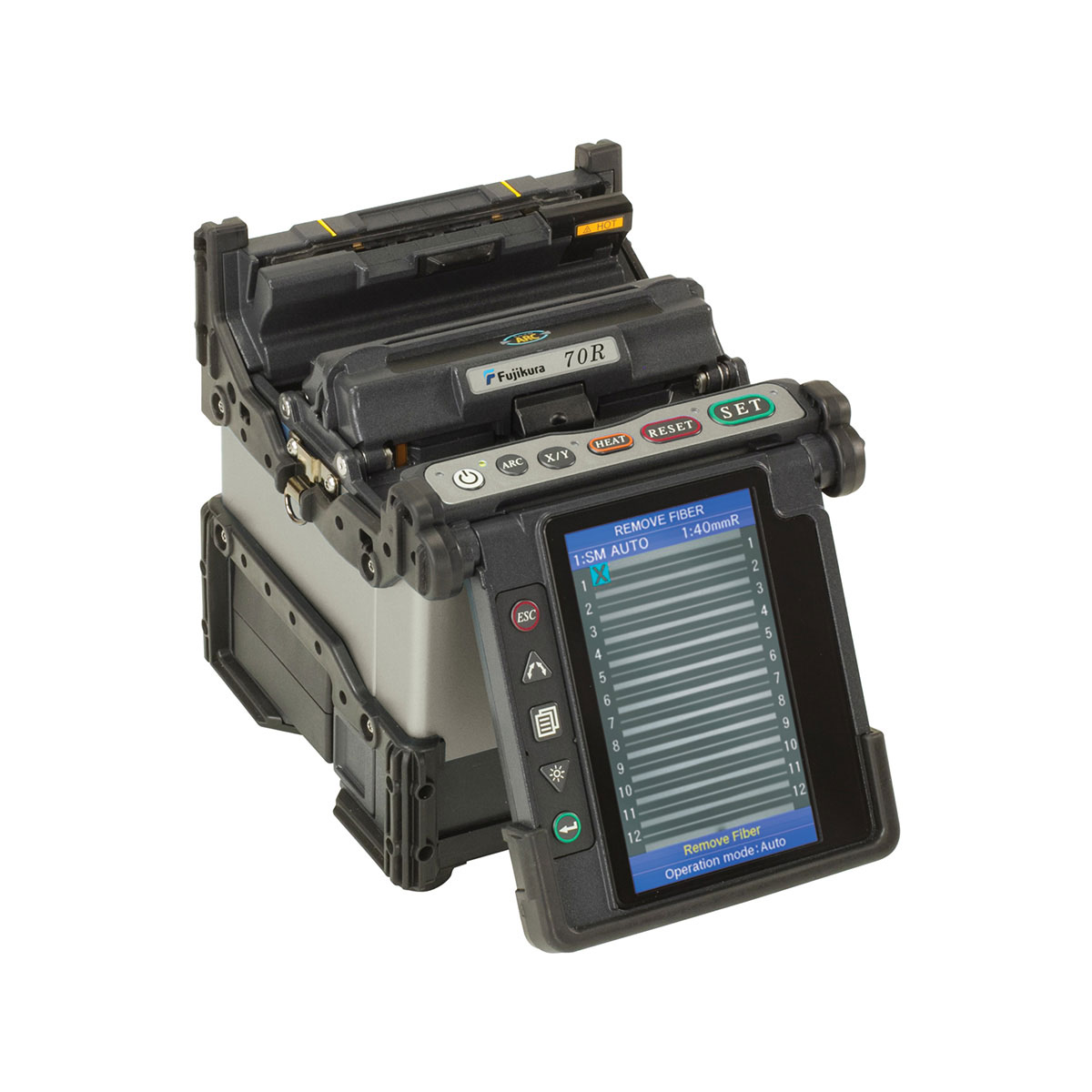Order #: FS725-USED
Mfg #: FS725-USED
Used Stanford Research Systems FS725 Rubidium Frequency Standard, RS-232
Order #: FS725-USED
Mfg #: FS725-USED
Product Highlights
The FS725 is a frequency standard from Stanford Research. Engineers use direct current (DC) voltage standards to calibrate, standardize, normalize, and monitor drift, verify linearity, and establish regulation in electronic equipment. Standards are important during electronics compliance testing. Phase angle standards are ideal for calibrating many different electronics, including power analyzers, vector voltmeters, phase meters, phase sensitive instruments, and resolvers.
- 10 MHz and 5 MHz outputs
- 1 pps input and output for GPS synchronization
- 20-year aging less than 0.005 ppm
- Ultra-low phase noise (<-130 dBc/Hz at 10 Hz)
- Built-in distribution amplifiers (up to 22 outputs)
- RS-232 computer interface
- Two status alarm relays
Output
- Output frequencies: 10 MHz sine, 5 MHz sine, 10 µs wide 1 pps pulse
- Amplitude: 0.5 Vrms, ±10 %
- 1 pps pulse amplitude: 2.5 V into 50 Ω, 5 V into High-Z loads
- Phase noise (SSB): <-130 dBc/Hz (10 Hz); <-140 dBc/Hz (100 Hz); <-150 dBc/Hz (1 kHz); <-155 dBc/Hz (10 kHz)
- Spurious: <-100 dBc (100 kHz BW)
- Harmonics: <-60 dBc
- Aging (after 30 days): <5 x 10-11 (monthly); <5 x 10-10 (yearly);5 x 10-9 (20 years, typ.)
- Short-term stability (Allan variance): <2 x 10-11 (1 s); <1 x 10-11 (10 s); <2 x 10-12 (100 s)
- Holdover: 72-hour Stratum 1 level (1 x 10-11)
- Frequency retrace: ±5 x 10-11 (72 hrs. off, then 72 hrs. on)
- Settability: <5 x 10-12
- Trim range: ±2 x 10-9 (0 to 5 VDC); ±0.5 ppm (via RS-232)
- Warm-up time: <6 minutes (time to lock); <7 minutes (time to 1 x 10-9)
Front-Panel Indicators (Green LEDs)
- Power: "On" when AC power is applied
- Locked: "On" when frequency is locked to Rb
- 1 pps input: Blinks with each 1 pps reference input applied to rear panel
- 1 pps sync: "On" when 1 pps output is synchronized within ±1 µs of 1 pps input
- Receive: Blinks when RS-232 characters are received by FS725
- Send: Blinks when RS-232 characters are sent by FS725
Rear-Panel Connections
- Frequency adjust: 0 to 5 VDC adjusts frequency by ±0.002 ppm (normally unconnected)
- 1 pps input: One 100 kΩ input. Requires CMOS level pulses (0 to 5 VDC). If an external 1 pps input is applied, lock is maintained between the 1 pps input and 1 pps output, with computer adjustable time constant from 8 minutes to 18 hours.
- 10 MHz outputs: Two 50 Ω isolated sine outputs
- 5 MHz output: One 50 Ω sine output
- 1 pps output: One 50 Ω pulse output
- Optional outputs: Each option board provides four 10 MHz, one 5 MHz, and one 1 pps outputs. Up to 3 boards can be installed.
- Alarm relays: Max. current, 3 A. SPDT, normally open or normally closed. May be wired in parallel with other relays to "wire-or" a single alarm.
- Rb lock: Relay status matches the front-panel "Locked" LED.
- 1 pps: Relay status matches the front-panel "1 pps sync" LED.
- RS-232: 9-pin connector configured as DCE,9600 baud. Windows RbMon software is provided.
Environmental
- Operating temperature: +10 °C to +40 °C
- Temperature stability: Δf/f < ±1 x 10-10 (+10 °C to +40 °C)
- Storage temperature: -55 °C to +85 °C
- Magnetic field: Δf/f < 2 x 10-10 (1 Gauss field reversal)
- Relative humidity: 95 % (non-condensing)
General
- AC power: 90 to 132 VAC or 175 to 264 VAC, 47 to 63 Hz, 50 W
- Dimensions: 8.5" x 3.5" x 13" (WHL)
The Stanford Research Systems FS725 integrates a rubidium oscillator (SRS model PRS10), a low-noise AC power supply, and distribution amplifiers in a compact, half-width 2U chassis. It provides stable and reliable performance with an estimated 20 year aging of less than 5 x 10-9, and a demonstrated rubidium oscillator MTBF of over 200,000 hours. The FS725 is an ideal instrument for calibration and R&D laboratories, or any application requiring a precision frequency standard.
There are two 10 MHz and one 5 MHz outputs with exceptionally low phase noise (-130 dBc/Hz at 10 Hz offset) and one second Allan variance (<2 x 10-11). The FS725 can be phase-locked to an external 1 pps reference (like GPS) providing Stratum 1 performance. A 1 pps output is also provided that has less than 1 ns of jitter, and may be set with 1 ns resolution.
Up to three internal distribution modules can be added to the FS725. Each module has four 10 MHz outputs, one 5 MHz output, and one 1 pps output, all with the same low phase noise, harmonic distortion and jitter.
An RS-232 interface allows direct communication with the rubidium oscillator. Using the provided Windows software, you can easily monitor and control 1 pps timing, and determine the instrument's operational status.
There are two alarm relays that indicate the status of the rubidium oscillator lock state and synchronization to an external 1 pps input. The relays are SPDT, providing both normally-open and normally-closed contacts.












